The Man in the High Castle by Philip K. Dick June 11, 2020
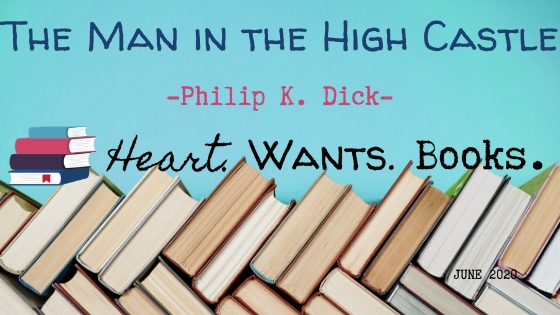
The following post includes affiliate links. More details here.
As much as I try not to do it, sometimes dear readers, I should on myself. When that happens, sometimes it ends well, and other times, it doesn’t. I’m not even sure how this one turned out yet, so let’s go on a little adventure while I see if I can work it out for myself. And before you ask, this isn’t the slog of a book mentioned last week.
I’m not sure exactly how it started but I adore Rufus Sewell. Maybe it was “Hamlet” or “A Knight’s Tale” where it started, but oh his portrayal of Lord M in PBS’s “Victoria” sealed the deal! Then he did an interview or two with the Masterpiece Podcast and he joined the ranks of Denzel Washington in my heart – I’ll watch almost anything these two actors are in because they are amazing actors, and delightful to watch perform! So, when my Adam proposed we watch the Amazon Original “The Man in the High Castle” I was in! I mean, I knew it was based on a book and I’d generally prefer to read the book first, but it’s Rufus, so just sign me up. Yes, I’ve seen all four seasons, and if you enjoy science fiction meets alternative history with fantastic writing and acting, WATCH THIS! If you love the book and are lukewarm on most adaptations, maybe don’t watch this. The book and the show are very different, and folks, there will be spoilers when we compare the two, because I don’t know how to not.
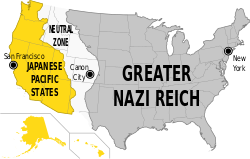
But first, the book, The Man in the High Castle by Philip K. Dick. Part of me is so caught up in the comparison of the book and the show that I struggle to separate my thoughts on the book from my thoughts on the comparison. The basic theme is the same: imagine a world in which the Allies don’t win World War II, but the Axis do. Japan occupies the Pacific States of America and Germany the East Coast. The middle is a mix of independent states and lawlessness. It’s 1962, and we follow a small cast of characters as they experience this world that is so similar yet so different. It’s interesting how the Pacific States are a blend of cultures, with the Japanese taking interest in American cultures, as well as how their culture reflects back on how their interest manifests and is expressed. Politics abound on the local and global levels. We also follow one character in the independent states as she seeks to find her place in the world after divorcing her husband back in San Francisco. The plot feels different for the different characters, but they’re all missing something and desperately seeking it out. Perhaps that’s the uniting piece of the book, or perhaps I’m just missing it, but more on that below.
It was interesting timing, as we’d been planning to read The Man in the High Castle this month because we enjoyed the show and the book is included in Kindle Unlimited, well before the topics of police brutality and race relations were again brought to the forefront of the national conversation. A book set in 1962, fictional or otherwise, felt like it could have important lessons to offer for our continued struggle with racial redemption, so we kept it on the list. The contrast of the Germans, the Japanese, and Americans in the book were quite interesting. The Germans with the large-scale power plays and the harsh demands of the Reich on all citizens contrasted with the calm demeanor of the Japanese, mostly seeking to co-exist with the Americans in the Pacific States and incorporate parts of the American culture into their own, just as they already had aspects of Chinese culture, including the I Ching, also called the oracle. According to The Man in the High Castle, the I Ching was created by sages of China over five thousand years using cosmology. The oracle includes forty-nine yarrow stalks which are cast to get six lines to form a hexagram, which leads to the text offering a prophecy of sorts. Slavery exists in this book, yes in 1962, albeit briefly on the page, and only for Black Americans. White Americans vary greatly, from just trying to get by and avoid notice to seeking to make a name supported by an impeccable reputation.
Because this book is told by several characters, readers get the internal dialogue of these characters, American, German, and Japanese. The individual characters range from kind, yet beaten down to those who are prejudiced, self-centered jerks. Even the kind characters who are just trying to survive (although, really, they all are) are prejudiced against those perceived as “other,” and there is minimal interaction between the groups, which feels reminiscent of a caste system where everyone has their assigned role in society and none should deviate. This restriction is supposed to feel like it belongs in an alternative history, but does it? Really? With many more truths being shared by Black Americans, I’m seeing that our country wasn’t, and in many ways still isn’t, that different than what Dick portrays in the book. The text portrays vanquished who are made to do the menial jobs the conquerors don’t want to do, and to assimilate to the culture of the conquerors. When we look at the communities most affected by the pandemic and the race of those in power, it doesn’t feel all that different. Perhaps that was the point of this book, to highlight human nature when power is left unchecked.
For all the heaviness of this book, there is joy too, the joy of watching the lengths some of the characters go to in pursuit of the right thing, even if the right thing doesn’t always get them the outcome they want. I know, it’s not much joy, but I’m trying to find the silver lining. The Man in the High Castle is a text of contrasts, with Japanese, Germans, and Americans, kind, well-meaning characters and selfish jerks, although, isn’t that what an alternative history should be? A comparison of what was and what could have been, if only. The writing style definitely took some getting used to, which isn’t usual for me, but this book is also very dense, which made it harder. Even with the perspective shifting among several characters, I didn’t have any struggle following who I was reading.
Overall, I give it three stars, subject to revision after further contemplation. I’m very glad I read it, but I don’t think I’d read it again, which is actually exactly how I feel about the show, despite my adoration of Rufus, and the spectacular performances of many others.

Here are the more spoilery parts for both show and book, so be warned. The book portrays only the West Coast and one character’s experience in the independent states. There are Germans in the Pacific States as ambassadors, business leaders, spies, etc., but that’s the extent of the German involvement in the book. There is no visit to New York or Germany, there is no John Smith in fact. Yes, that made me sad there was no character for Rufus Sewell in the book, and perhaps unfairly influenced my opinion. It also made me frustrated at the show, as did many of the smaller differences. Much of the back and side stories in the show are not a part of the book (the families of the characters). Some characters from the book are combined for the purposes of the show, and others are magnified to give a much larger role.
I think overall, the book is just much smaller than the show, quieter, less showy. Coming in at 290 pages, it would have to be compared to four seasons (40 episodes) of a drama (which means 50ish minutes per episode, at least for this show). And in true fashion, the titular character created a book in the book and many film reels in the show. Here’s the thing though, the book is all action with no resolution, no easily discernible point. The additions to the material for the show turned into the point of the show. Character development, the struggles of maintaining centralized power, particularly across oceans, are highlighted in the show to create a journey, a struggle, and show resolution. The book has very little resolution, and just doesn’t feel finished. Perhaps without also having seen the show, I’d feel differently. Perhaps not.
Have you seen or read The Man in the High Castle? If so, let us know what you think!
~Nikki

I’m not going to sugar coat my feelings about this book. I am not a fan. I can’t with the writing style. I can’t with the lack of actual plot (beginning, middle, end). I can’t with the lack of proper English grammar from a narrator (I am totally ok when a character is speaking in a dialect.). I can’t with the lack of conviction from the author (every damn character is a freaking anti-hero?!?). I can’t with the women are accessories not human beings. I can’t with the racism and the facism (and the barely implying that either of these are NOT OK). The Man in the High Castle was the 1963 Hugo Award winner for Best Novel, and I had higher expectations for this book and they were not met. I’m both mad and disappointed. For the remainder of my rant, I’m going to follow along in Nikki’s order of talking points and just rip this 2-star book a new one; may Philip K. Dick (PKD) rest in peace, but EVERYONE WAS HIGH in the 1960’s and this book is not an exception to that generalization. The following is full of spoilers.
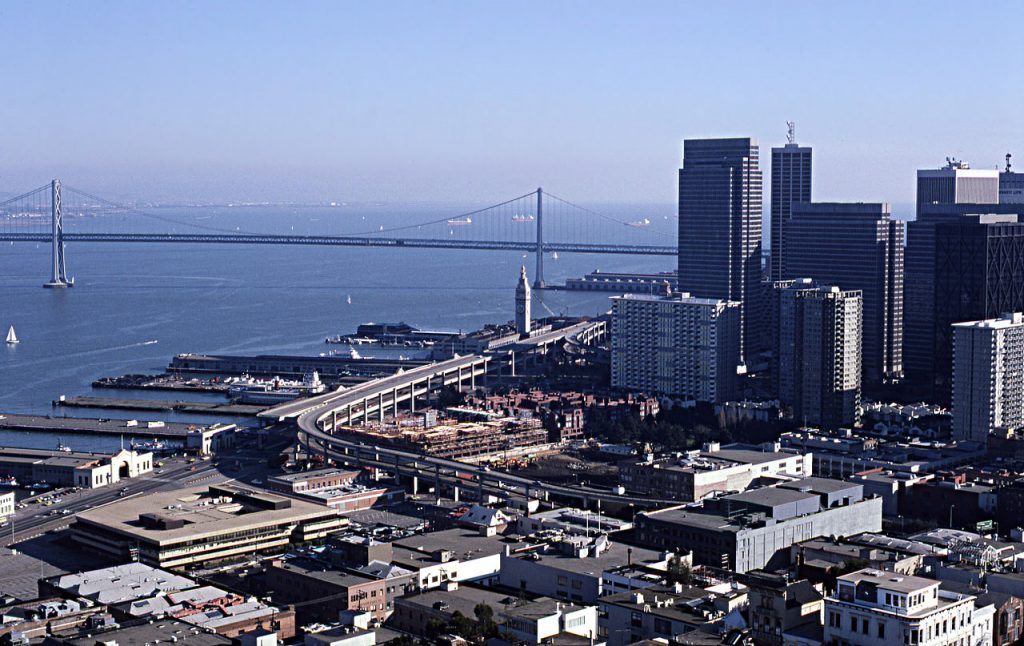
Gerald P. Hawkins via Wikipedia
Let’s begin with how I loved Amazon’s “The Man in the High Castle”. Adam and I also watched it, but we were a little late to the game, beginning season one once season two had been released. We were not as into the changes in the premise once season four started, but we persevered. One thing I DID like that the book did and the show didn’t was that PKD had the technologically superior Nazi Reich colonizing the Moon, Mars, and other planets by 1962. The show didn’t mention bubkus about space travel, which is a total bummer, just the ‘mutiverse’ where alternate versions of their reality exists and where the Nazi want to subjucate to the Reich. The concept comes from ONE (just one!) scene in the book where Mr. Tagomi visits an alternate reality and sees the “nightmare of roller coaster suspended” Embarcadero Freeway in San Francisco.
So, let’s talk about race in this alternate 1960’s America. The Nazi have outlawed the Jewish people, commited untold holocausts against them in Europe and America, and those who are attempting to live peacefully in non-Nazi controlled territiories are actively searched for, exported to the Reich, and killed. In addition to the Jewish Holocaust, the entire continent of Africa had been a ‘chemical experiement’ by the Nazis where all of the tribes were wiped out. And then, those people of African descent left in Japanese controlled territory were enslaved to the state, not necessarily owned by one person, but owned by all and required to work for nothing. Grossly referred to as chinks throughout the entire book, the San Francisco people of Chinese descent were employed as pedicab drivers and only barely above the black enslaved people in the social hierarchy described by a natural born American character trying to build his reputation with the Japanese as a purveyor of authentic American cultural goods. The parallels of what character Robert Childan is doing here and what the Native American tribes have done in response to white, mainstream American actions is obvious, disheartening, and a call for us to do better! And then the systemic racism that comes out of Tagomi’s thoughts after he’s sent to the alternative reality America (our America) where the white people are eating in a restaurant and do not bow and defer to him, a high political Japanese man, reflects exactly what white supremacy teaches white people, males especially to expect in our own society. PKD turns the races around, but doesn’t allow for growth and change to have happened in either the book’s reality or ours.
PKD also doesn’t treat women as more than accessories to men, referenced only in their relationship with the men in their lives. It’s impossible to see if this is meant to be a statement where the reader is supposed to infer that what is going on is wrong or if he is just writing from his lived and patriarchal experiences. My opinion is the latter and it bothers me immensely. I think there are a total of three female characters, Tagomi’s secretary Miss Ephreikian, the divorcee Mrs. Juliana Frink, and the wife of the Man in the High Castle. Only Juliana takes any assertive action, but the way PKD wrote her change, it was as if she were having a manic episode, or high on some sort of drug. (Let’s be real, PKD was probably the one on drugs trying to write the scene, and couldn’t see it happening any other way because that’s the way he treated the women in his life. He was married five times, you can infer whatever you like from that.)
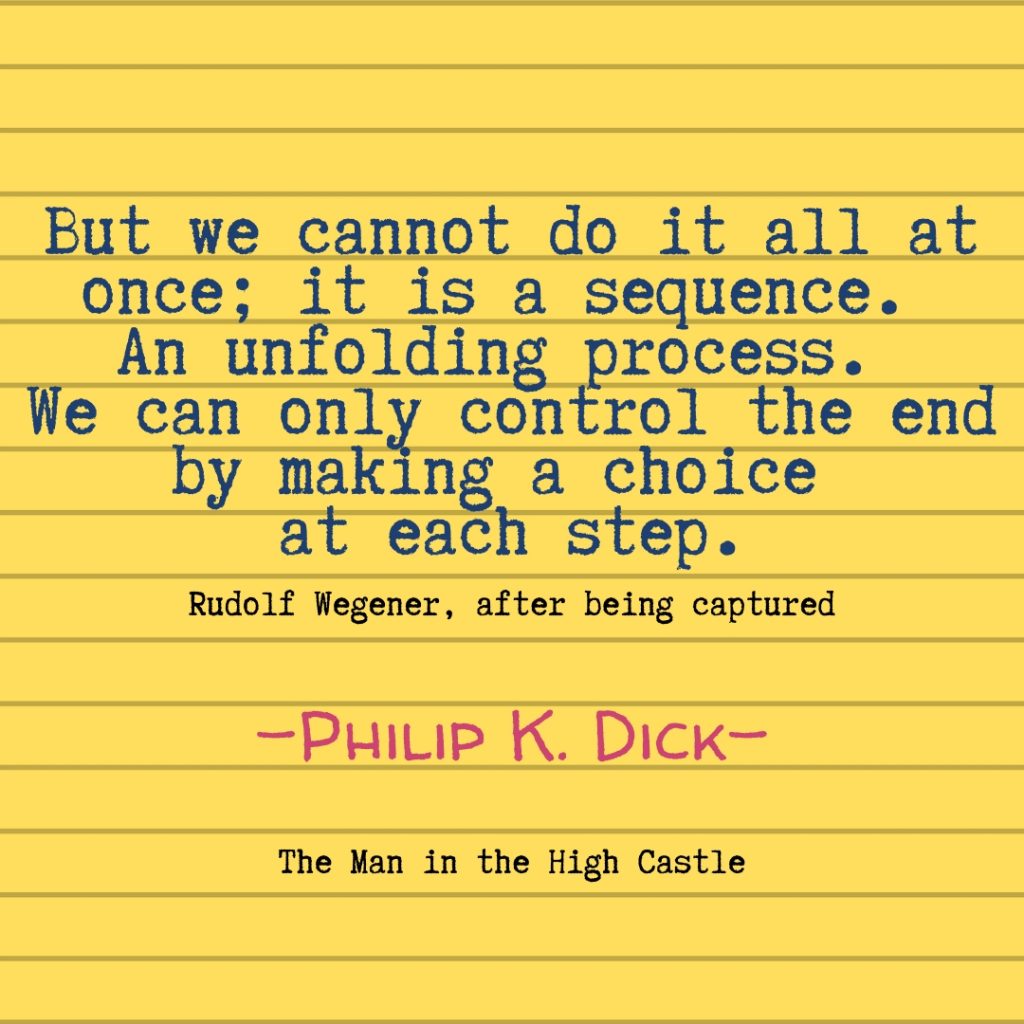
In conclusion, I didn’t like that the characters had no growth, no change. One of my favorite quotes was this one from secret agent against the Nazi’s Rudolf Wegener: “But we cannot do it all at once; it is a sequence. An unfolding process. We can only control the end by making a choice at each step.” There were not many steps being taken towards making a new and better world by any of the characters. We didn’t know enough about their individual motivations to know if the choice they were making was the easy choice or the right choice – towards what we know could be an equal, free, and just world. I needed more clarity in my characters at this point in my reading life, and I don’t appreciate the ambiguity. I will be clear, I will not be re-reading The Man in the High Castle and I doubt I will be picking up any other PKD works. It’s not a good escape read for me nor does it help in my journey to do better except for reiterate that which I already know not to do.
~Ashley
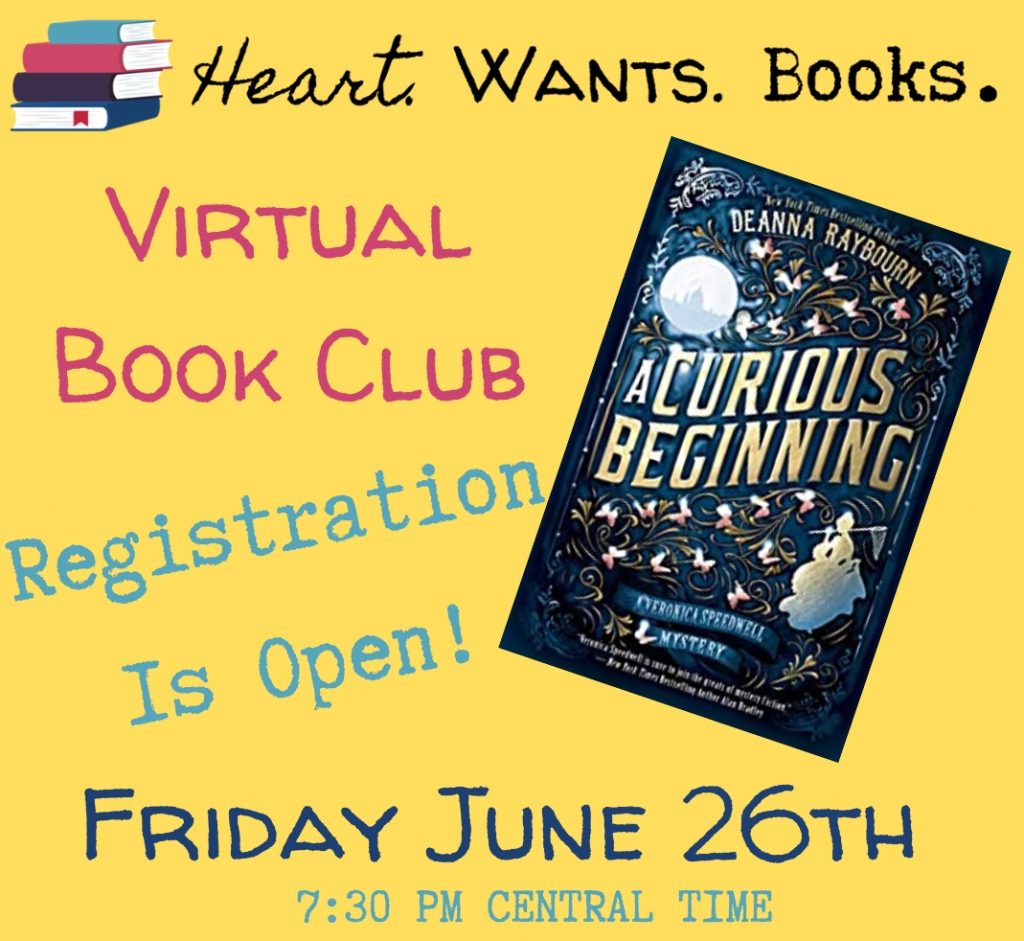
Friends, the world today is heavy, and you need to balance doing your work with self care. If you don’t put your oxygen mask on first, you can’t help others. If book club might help with that, we’re here for you. Registration is still open for Virtual Book Club at 7:30pm Central Time on Friday 26 June to discuss Deanna Raybourn’s A Curious Beginning (A Veronica Speedwell Mystery Book 1). Also, if you have suggestions of what we should read next for book club, bring them! We want to hear from those who participate what they’d like to read and discuss!


